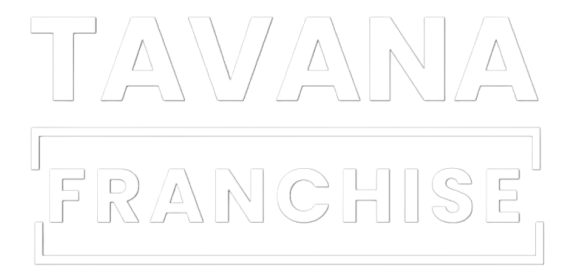The franchise industry has seen big growth. Over 800,000 franchise units exist in the US. This number is expected to keep growing, making franchise development a great choice for businesses wanting to grow.
Franchising can help you succeed. Big names like McDonald’s and Domino’s have shown franchising’s power. By using this method, you can increase your brand’s visibility and enter new markets.
Franchising lets you copy your business model. This creates a network of places that carry your brand. This can bring in more money and make your brand stronger in the market.
Key Takeaways
- Expand your business with franchise development
- Increase brand visibility through franchising
- Tap into new markets with a proven business model
- Boost revenue with a network of outlets
- Replicate your business model for success
What is Franchise Development?
Franchise development is about building a strong framework for your business to grow. It involves several key elements. These elements work together to ensure your franchise’s success.
Definition and Overview
Franchise development means creating a system for your business to expand through franchising. It includes strategic planning, market analysis, and operational setup. These steps help create a business model that can be easily replicated.
To make a successful franchise, you must evaluate your resources and set clear goals. You also need to learn and adapt continuously. This means understanding your business’s strengths and weaknesses and the demand for your product or service.

The Importance of Franchise Development
Franchise development is key for businesses wanting to grow and succeed. A well-planned franchise strategy can increase brand visibility, boost revenue, and open up new markets.
A good franchise development process lays a solid foundation for your business. It makes your business more appealing to potential franchisees. It also allows you to support your franchisees, ensuring their success and yours.
Key Components of a Successful Franchise
A successful franchise has several important parts. These include a robust business model, comprehensive training programs, and ongoing support for franchisees. Here’s a table that outlines these components:
| Component | Description | Importance |
|---|---|---|
| Business Model | A replicable and profitable business model that can be easily adopted by franchisees. | High |
| Training Programs | Comprehensive training programs that equip franchisees with the necessary skills and knowledge. | High |
| Ongoing Support | Ongoing support and guidance provided to franchisees to ensure their success. | High |
| Marketing Strategy | A well-planned marketing strategy that promotes the franchise brand and attracts customers. | Medium |
By focusing on these key components, you can create a successful franchise. This will drive growth and profitability for your business.
Benefits of Franchise Development
Franchising is a great way to grow your business. It can make your brand more visible, increase your earnings, and open up new markets. Exploring franchise development can help you reach your business goals.
Increased Brand Visibility
One big plus of franchising is it can make your brand more known. By growing through franchising, you can:
- Reach new customers and markets
- Make your brand more visible in places you already have a presence
- Build a stronger brand identity
More visibility means more loyal customers and more sales. As your brand gets more famous, you’ll have an edge in the market.
Revenue Growth Opportunities
Franchising also means more money. By expanding through franchising, you can:
- Make more money from franchise fees and royalties
- Benefit from your franchisees’ hard work
- Have a more stable and predictable income
Franchising lets you use your franchisees’ strengths while keeping control over your brand and operations.
Access to New Markets
Another big plus of franchising is it lets you enter new markets. Franchising helps you:
- Go into new places
- Find new customers
- Make money in different ways
By going into new markets, you can not rely on just one market and make your business stronger.
In short, franchising has many benefits. It can make your brand more visible, increase your earnings, and open up new markets. Knowing these benefits can help you make smart choices about growing your franchise.
Steps to Successfully Develop Your Franchise
To make a franchise successful, you need to know your market well and have a solid plan. Starting your franchising journey involves several key steps. These steps will help you achieve success.
Conducting Market Research
Doing deep market research is key to knowing your audience and making good franchise marketing strategies. You should look at what people like, their habits, and who they are. This helps you shape your products and marketing to fit their needs.
- Find out who your audience is and what they want.
- Look at your competitors and what’s happening in the market.
- See if there’s a demand for what you offer.
Knowing your market well lets you create a franchise that people will love. It will also help you stand out from others.

Creating a Comprehensive Franchise Plan
A detailed franchise plan is essential for your franchise’s growth. It ensures that all locations run the same way. Your plan should cover:
- Your business goals and how you plan to achieve them.
- How things will work day-to-day.
- Marketing and sales plans.
- Money matters and budgeting.
With a solid plan, your franchisees will have everything they need to do well.
Securing Funding and Resources
Getting enough money and resources is crucial for your franchise’s success. You’ll need:
- Money for starting up.
- Support and training for franchisees.
- Money for marketing and ads.
With the right funding and resources, your franchisees can reach their goals. This will help your franchise grow and succeed.
In summary, making a franchise work takes careful planning, good market research, and enough resources. By following these steps and using smart franchise marketing strategies, you can grow your business and reach more people.
Choosing the Right Franchise Model
It’s important to know the different franchise models before making a choice. Each model has its own benefits and drawbacks. You need to think about what’s best for your business goals.
Types of Franchise Models Explained
There are several franchise models, each with its own features. The main types are:
- Single-unit franchise: You get to run one unit.
- Multi-unit franchise: You can manage many units in a territory.
- Area development franchise: You must open a set number of units in a certain area.
- Master franchise: You can sub-franchise in a specific territory.
Each model fits different business plans and budgets.
Factors to Consider When Choosing a Model
When picking a franchise model, consider a few things. These include:
| Factor | Description |
|---|---|
| Business Goals | Make sure the model fits your business goals. |
| Financial Resources | Look at the costs, like the initial investment and ongoing fees. |
| Market Conditions | Check the competition and demand in your area. |
Thinking about these factors helps you pick a model that supports your business’s growth.
Pros and Cons of Different Models
Every franchise model has its good and bad sides. For example, a single-unit franchise is simple and cheap but limits growth. A master franchise model can make a lot of money but needs more resources and management skills.

Knowing the pros and cons of each model helps you choose the right one for your business.
Marketing Strategies for Franchise Development
Starting a franchise requires smart marketing. A good marketing plan helps you reach more people, grow your brand, and sell more. Here, we’ll look at key strategies for your franchise success.
Digital Marketing Tactics
Digital marketing is key for franchises. It lets you target the right people, see how well your ads work, and change your plans as needed. Some top digital tactics include:
- Search Engine Optimization (SEO) to get your site seen more
- Pay-Per-Click (PPC) ads to bring in specific visitors
- Email marketing to keep leads interested and loyal
- Social media to connect with your audience and share your brand
Using these digital methods can boost your online presence, attract more leads, and increase sales for your franchise development company.

Traditional Marketing Approaches
Even with digital marketing, old-school methods still matter. They include:
- Print ads in local papers and magazines
- Outdoor ads like billboards and signs
- Events to give people a taste of your brand
- Public Relations (PR) to earn trust and excitement
Mixing traditional and digital marketing makes a strong plan. It helps you reach more people and get better results for your franchise development efforts.
Building a Franchise Brand Identity
A strong brand is vital for franchises. It makes you stand out, keeps customers coming back, and looks the same everywhere. To build a strong brand, focus on:
- What makes your franchise special
- A consistent look, like logos and colors
- A message that speaks to your audience
- Keeping your brand the same everywhere
With a solid brand, you’ll attract loyal customers, grow your business, and meet your franchise goals with the help of a franchise development company.
Measuring Success in Franchise Development
To make sure your franchise development works well, you need to track it with data. Using franchise development services helps you see how your franchise is doing. You can look at important numbers that show if your franchise is growing.
Key Performance Indicators (KPIs)
It’s important to know and watch your KPIs to see if your franchise is doing well. These can be things like how happy your franchisees are, how much money they make, and how big your market is.
Analyzing Franchisee Performance
Looking at how your franchisees do helps you see what’s working and what’s not. This lets you help those who need it more. It’s a way to make sure everyone in your franchise is doing their best.
Continuous Improvement Strategies
Always trying to get better is key to making your franchise development even stronger. This means fixing what’s not working and using chances to grow. It helps you make your franchise development services better and more successful over time.

